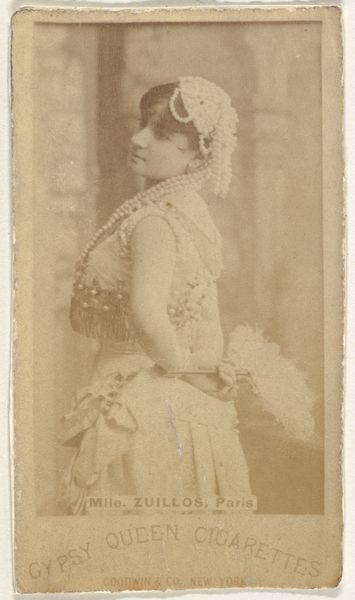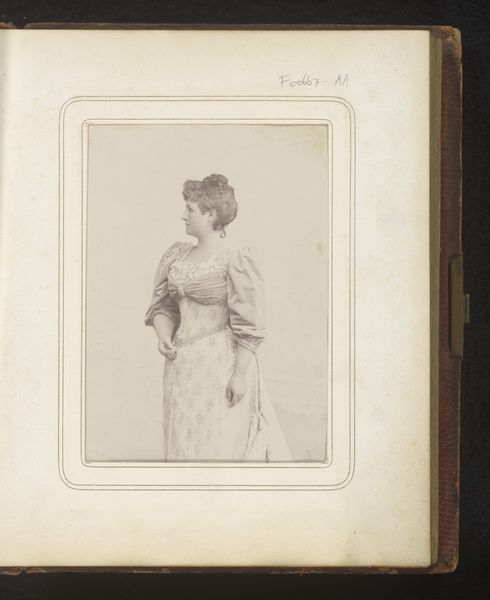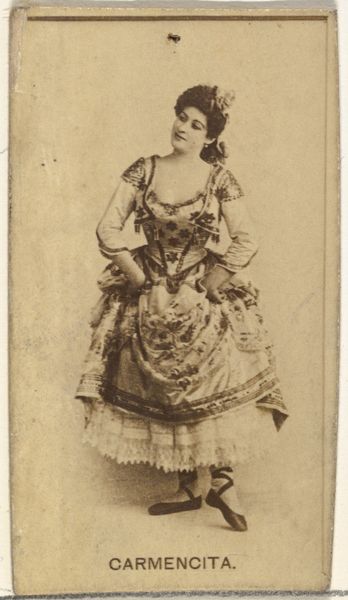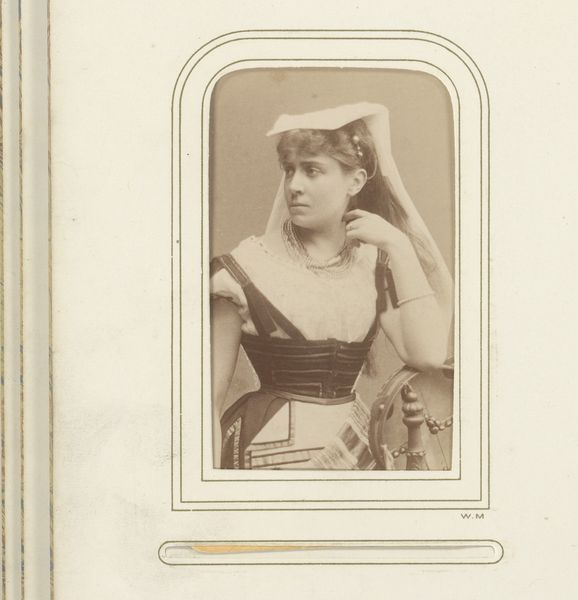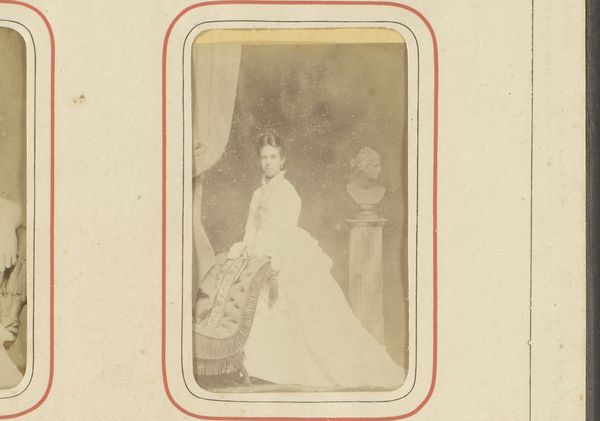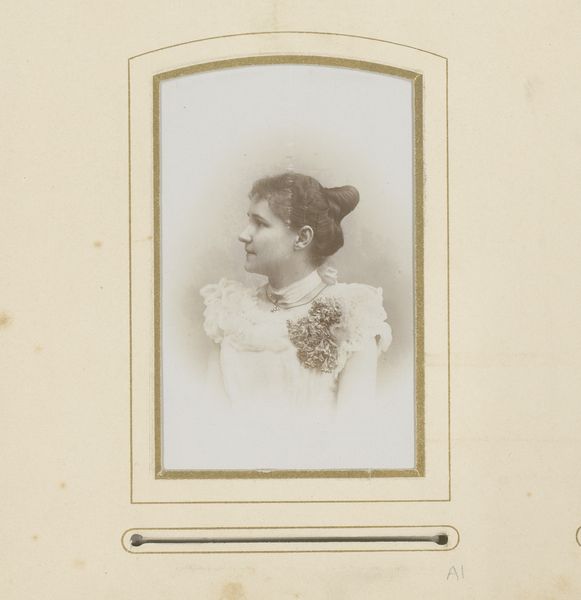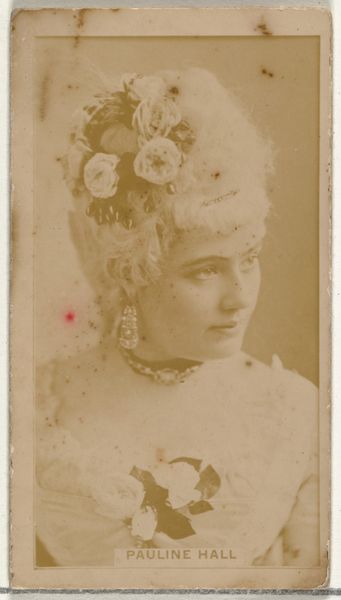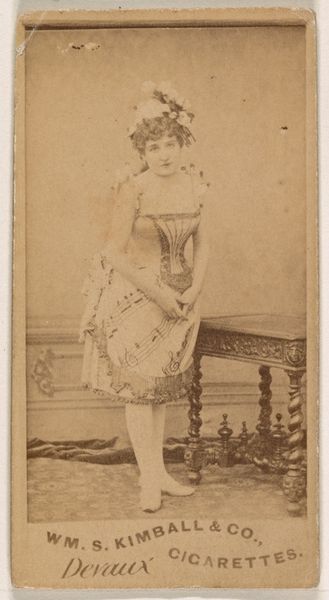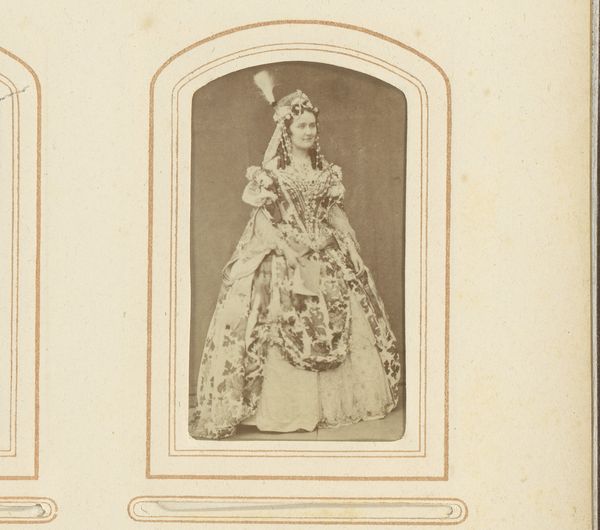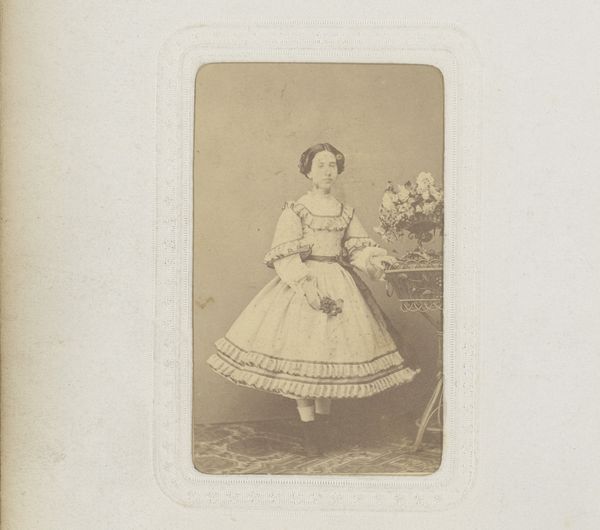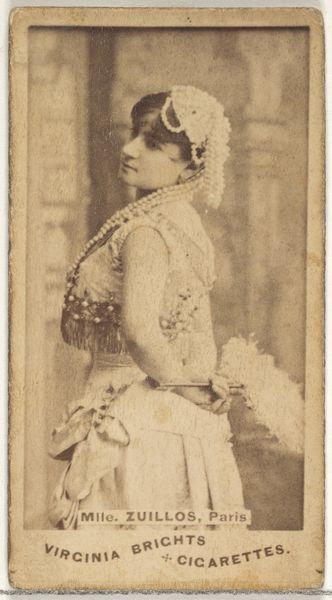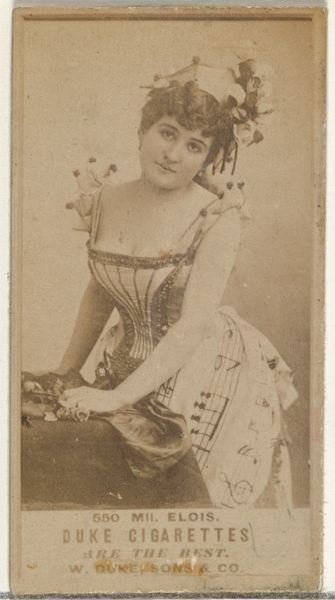
photography
#
portrait
#
pictorialism
#
archive photography
#
photography
#
historical photography
#
historical fashion
#
19th century
#
realism
Dimensions: height 84 mm, width 51 mm
Copyright: Rijks Museum: Open Domain
Editor: Here we have Nadar's "Portret van Marie Heilbron," a photographic print made sometime between 1878 and 1890. There’s a delicate quality to the image, softened by the lighting and the sitter's pose. What’s striking to me is how posed and theatrical it feels. What can you tell me about it? Curator: Absolutely. The "Portret van Marie Heilbron" by Nadar exists within a fascinating nexus of social and artistic transitions. What do you think about when considering the historical and cultural forces at play during this period, and their effect on the visual arts? Editor: Well, the late 19th century was a time of shifting social norms and emerging photographic technologies, right? I guess photography was moving from documentary to an art form in itself, influencing ideas around representation and identity. Curator: Precisely. Photography in the late 19th century offered women opportunities, yet representations were often framed by societal expectations. Marie Heilbron, as a subject, embodies some of those tensions, doesn’t she? What's your sense of the performative aspect in the staging and her attire? Editor: The flowers, the fan... there’s a deliberate construction of femininity on display, I see how the clothing might be making statements about wealth and class, too. How do you think a contemporary audience might view this? Curator: Now, intersectional narratives and how we negotiate identities, it is vital. It enables us to recognize both the historical constraints and the possibilities for self-expression within a portrait like this. How does knowing the historical period impact your interpretation of the portrait? Editor: Thinking about it, the portrait isn't just about surface appearances; it prompts questions about power, representation, and the gaze, that resonate today. Curator: Indeed, and that's where art history meets contemporary theory. Reflecting on this, I’m more conscious of the intricate relationship between the photographer, the subject, and the viewers' position in shaping our understanding of her story. Editor: I agree; this portrait is more than just a record of appearance; it invites us to unpack cultural, social, and historical layers, informing a wider contemporary dialogue.
Comments
No comments
Be the first to comment and join the conversation on the ultimate creative platform.
